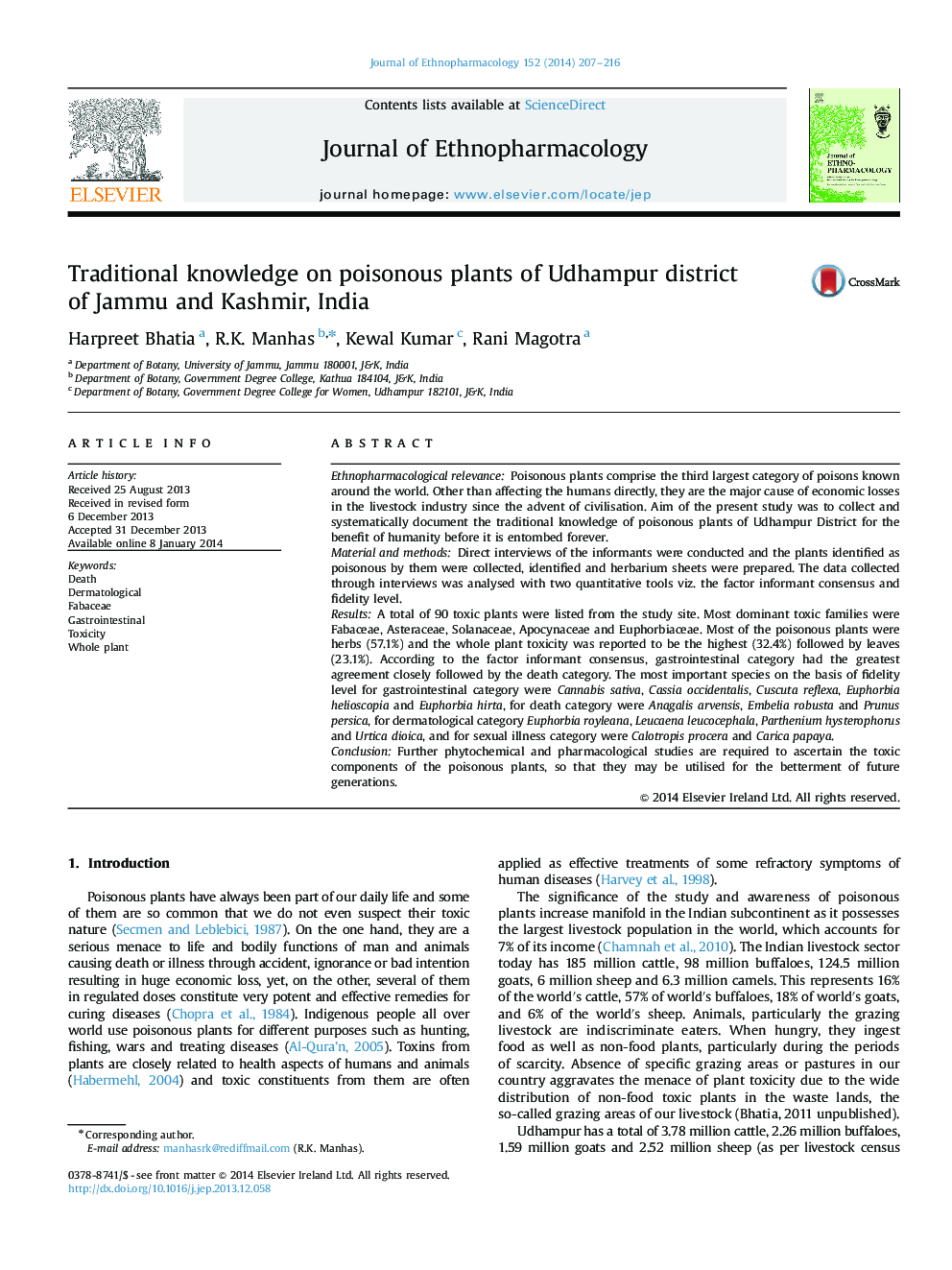| کد مقاله | کد نشریه | سال انتشار | مقاله انگلیسی | نسخه تمام متن |
|---|---|---|---|---|
| 2545226 | 1123941 | 2014 | 10 صفحه PDF | دانلود رایگان |
Ethnopharmacological relevancePoisonous plants comprise the third largest category of poisons known around the world. Other than affecting the humans directly, they are the major cause of economic losses in the livestock industry since the advent of civilisation. Aim of the present study was to collect and systematically document the traditional knowledge of poisonous plants of Udhampur District for the benefit of humanity before it is entombed forever.Material and methodsDirect interviews of the informants were conducted and the plants identified as poisonous by them were collected, identified and herbarium sheets were prepared. The data collected through interviews was analysed with two quantitative tools viz. the factor informant consensus and fidelity level.ResultsA total of 90 toxic plants were listed from the study site. Most dominant toxic families were Fabaceae, Asteraceae, Solanaceae, Apocynaceae and Euphorbiaceae. Most of the poisonous plants were herbs (57.1%) and the whole plant toxicity was reported to be the highest (32.4%) followed by leaves (23.1%). According to the factor informant consensus, gastrointestinal category had the greatest agreement closely followed by the death category. The most important species on the basis of fidelity level for gastrointestinal category were Cannabis sativa, Cassia occidentalis, Cuscuta reflexa, Euphorbia helioscopia and Euphorbia hirta, for death category were Anagalis arvensis, Embelia robusta and Prunus persica, for dermatological category Euphorbia royleana, Leucaena leucocephala, Parthenium hysterophorus and Urtica dioica, and for sexual illness category were Calotropis procera and Carica papaya.ConclusionFurther phytochemical and pharmacological studies are required to ascertain the toxic components of the poisonous plants, so that they may be utilised for the betterment of future generations.
Poisonous plants with high fidelity level for various ailments.Figure optionsDownload high-quality image (160 K)Download as PowerPoint slide
Journal: Journal of Ethnopharmacology - Volume 152, Issue 1, 27 February 2014, Pages 207–216
